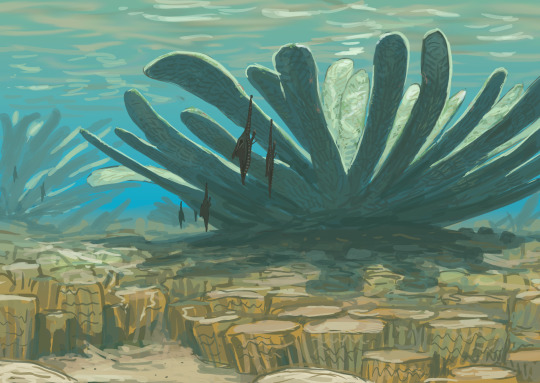#bivalve
Text
Happy Holidays 2023 from ASO!

Happy Holidays from the ASO Team! This year we're all collectively sharing the seasonal cheer, just like Sonic and pals are! See if you can tell who drew who!
And what's that Sonic is holding? Open on Dec. 31st, huh? Guess you'll all need wait just a bit longer for the surprise.
Art by @drawloverlala, @pichi-08, @sofibeth-arts, @lankstir21, @salsacoyote, @corythec, @nebuleeart, @little30flames, @kitareartist, @arantarisu-yamu, @darknoisestudio, Tempo, AluSniper, The Magyar, JonnyUnique, Dict.Cola, Sea-Salt, Gaia Ruggenini, Tom Carter “IndexSonic”, _GR33N_RAT_, Nekasa, JaSketch, Pesky-Pincushion, and AidenEye!
#archie sonic online#archie sonic#sonic the hedgehog#merry christmas#happy holidays#aso#sally acorn#knuckles the echidna#amy rose#shadow the hedgehog#miles tails prower#rotor the walrus#nicole the holo lynx#antoine d'coolette#bunnie rabbot#cream the rabbit#cheese the chao#big the cat#froggy#bivalve#julie su the echidna#espio the chameleon#charmy bee#mighty the armadillo#ray the flying squirrel#uncle chuck#blaze the cat#marine the raccoon#rouge the bat#silver the hedgehog
485 notes
·
View notes
Text

Eyes of a scallop
By: William H. Amos
From: The Fascinating Secrets of Oceans & Islands
1972
#scallop#bivalve#mollusk#invertebrate#1972#1970s#William H. Amos#The Fascinating Secrets of Oceans & Islands
265 notes
·
View notes
Text
By studying calcifying organisms, Leanne aims to better understand the impacts of human activity on marine ecosystems. Through her research, she hopes to influence policy that helps protect marine calcifiers in the future.
“Why is this important? The idea is that the more porous the shell, the weaker it is. Mussels need strong, robust shells to protect their inner soft organs—and that strong 3D structure is important for ecosystem function as habitat formers and storm defenses.
Currently, the changes seen in shell porosity are not large enough to influence the material properties, so we aren’t seeing weaker shells just yet. But with further warming in our oceans being predicted, this could potentially lead to even more porous shells, potentially impacting mussels’ function as habitat formers and storm defenses, as well as their ability to protect themselves from predation,” Melbourne explains.
Learn more about her research here.
#science#museum#amnh#natural history#nature#marine biology#marine ecosystem#mussels#bivalve#did you know#fact of the day#research#women in stem#climate change#conservation#earth month#earth day
293 notes
·
View notes
Text

🪱 #InsertAnInvert2024
Worms: Long and Limbless
Shipworm
Despite the appearance, shipworms are actually a mollusc! These bivalves have evolved to use their shells not for protection, but for boring through driftwood.
------
Interested in learning more about the invertebrate animals around us? Join into the year-long InsertAnInvert event organized by Franzanth, where every week a new animal is spotlighted! Draw unique animals, read up on cool facts, or just follow the tag online to see a lot of cool artwork.
Prompt List: https://bsky.app/profile/franzanth.bsky.social/post/3khyob3xn742q
------
Like my work? Visit my shop, or support me on Ko-Fi!~
#cuttledreams#insertaninvert2024#shipworm#bivalve#molluscs#I love shipworms#have wanted to paint some for almost a year and am so happy it was on the prompt list
209 notes
·
View notes
Text

Draconic Bivalve Adopt
Drawn on stream! This design is so fun I hope they go to a good home. You can purchase here on ko-fi!
Check replies or dm for availability!
#adopts#adopts open#open adopts#cute adopts#cheap adopts#furry adopts#adoptables#adoptables open#open adoptables#cute adoptables#cheap adoptables#furry adoptables#bivalve#dragon#furry#furry art#furry fandom
232 notes
·
View notes
Text




Results from the #paleostream Congopycnodus, Necrolemur (a #MonkeyCruise piece!), Elephas hysudricus and Chondrodonta (and very large bivalve)
#paleoart#sciart#pycnodont#lemur#monkeycruise#elephant#bivalve#primate#cretaceous#paleostream#photo#fossil fish#jurassic#palaeoblr
612 notes
·
View notes
Text

Spondylus sp. Thorny oyster from East Timor.
73 notes
·
View notes
Text

It's December 31st, so let's open Sonic's special surprise gift for everyone!
Hmmm... What do we have here..?
#archie sonic online#aso#sonic the hedgehog#sonic the hedgehog online#archie sonic#teaser#shadow drop#issue 253#ugly geoffrey#bivalve#big the cat#antoine d'coolette#christmas tree#christmas presents#out today
56 notes
·
View notes
Text

Scallop
By: Jane Burton
From: The Complete Encyclopedia of the Animal World
1980
#scallop#bivalve#mollusk#invertebrate#1980#1980s#Jane Burton#The Complete Encyclopedia of the Animal World (1980)
314 notes
·
View notes
Text
going to name my first girl after a bivalved sea snail

245 notes
·
View notes
Text

Strange Symmetries #09: Not Toeday, Satan
The shells of bivalve molluscs are formed on the left and rights sides of their bodies, and so are usually roughly bilaterally symmetric.
But some bivalves break that arrangement, developing asymmetrical valves that can be massively different in size and shape.
Gryphaea arcuata was an oyster that lived during the Early Jurassic, about 200-174 million years ago, in the warm shallow seas that covered what is now Europe and eastern Greenland. Around 6cm long (~2.4"), its left valve was thick and strongly convex and curled, while the right valve was relatively thin and slightly concave forming a "lid".
The gnarled curled claw-like shape of Gryphaea fossils led to them being colloquially known as "devil's toenails" in some of the regions where they're commonly found, with folk beliefs that they had the power to prevent joint pain.
Their shape was actually an adaptation to living on very soft seafloor sediments. The larger curled valve acted sort of like a boat on the soupy mud, supporting the Gryphaea's weight and preventing it from sinking.
———
NixIllustration.com | Tumblr | Twitter | Patreon
#science illustration#strange symmetries#paleontology#paleoart#palaeoblr#gryphaea#gryphaeidae#ostreida#oyster#bivalve#mollusc#invertebrate#art#devil's toenails
236 notes
·
View notes
Text

day 22 blue mussel
#invertober#mussel#bivalve#blue mussel#mollusc#reffed from the main wikipedia image for them#the displaying of the mussel in it is very very neat to me
261 notes
·
View notes
Text

🪱 #InsertAnInvert2024
Shells: Swimmers
Fragile File Shell (Limaria Fragilis)
Learning that some bivalves can swim felt like opening a whole new world of wonder. There's never an end to what is to be discovered!
------
Interested in learning more about the invertebrate animals around us? Join into the year-long InsertAnInvert event organized by Franzanth, where every week a new animal is spotlighted following each monthly theme! Draw unique animals, read up on cool facts, or just follow the tag online to see a lot of cool artwork.
Prompt List: https://bsky.app/profile/franzanth.bsky.social/post/3khyob3xn742q
------
Like my work? Visit my shop, or support me on Ko-Fi! It really does help keep my work possible~
#cuttledreams#insertaninvert2024#fragile file shell#bivalve#they swim!#and can detach tentacles if needed to go even faster
19 notes
·
View notes